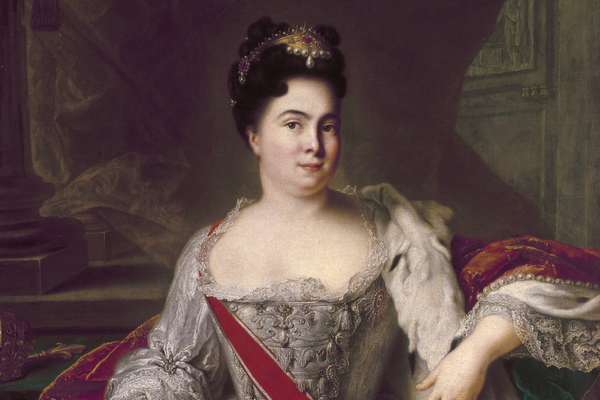Objects of Intrigue: George Washington’s Sawfish
George Washington’s study at Mount Vernon, with a sawfish rostrum on his desk (photograph by Robert C. Lautman, courtesy Mount Vernon)
Like many 18th century gentlemen, George Washington kept his own cabinet of curiosities. The first American president collected natural oddities, historical artifacts, and cultural objects in his study at Mount Vernon. While his home is now a museum to Washington’s legacy, it doesn’t leave out any of these lesser known and unusual aspects of his life.
Jessie MacLeod, assistant curator in the Department of Historic Preservation and Collections at Mount Vernon and the Fred W. Smith National Library for the Study of George Washington, told Atlas Obscura about one object of particular interest in Washington’s study — a sawfish rostrum at Mount Vernon:
“In the spirit of the gentleman’s wunderkammer or ‘cabinet of curiosities,’ Washington stored many interesting and exotic items in his study at Mount Vernon. In addition to a telescope, a terrestrial globe, a model cannon, General Edward Braddock’s military sash, and an assortment of swords and guns, the retired president displayed a selection of natural history specimens.
These included a piece of staghorn coral, likely brought back from his 1751 trip to Barbados (and his only foray out of the country); an “Indian feather,” possibly given to him by leaders of the Cherokee or another southeastern tribe, for whom eagle feathers functioned as diplomatic gifts; and, most strikingly, a sawfish tooth, or rostrum.
The sawfish rostrum and coral on display in Washington’s study (courtesy Mount Vernon)
The sawfish is a member of the ray family, and, much like the swordfish, has a long projection emerging from its nose called a rostrum (plural: rostra). This protrusion of cartilage and bone also features “teeth” (which are actually modified scales) along its edges, creating a rather menacing, saw-like appearance. A sawfish uses its rostrum to detect and injure the small fish on which it preys. Sawfish rostra were also highly coveted as “curios” by gentleman collectors, appearing in illustrations of wunderkammer as early as the 16th century.
There is no known record of where Washington acquired his sawfish rostrum, though, like the feather, it may have been a gift from Native American leaders. At the July 22, 1802, sale of George and Martha Washington’s belongings, Captain Thomas Hammond purchased a “sawfish tooth” for $4 and the aforementioned “Indian feather” for $1. Neither of these items is listed individually on the 1799 inventory of Mount Vernon taken at Washington’s death, but the inventory does include “Indian presents” valued at $5—an entry that may refer to the rostrum and feather.
Unfortunately, Washington’s original specimen has been lost, but several years ago Mount Vernon acquired another sawfish rostrum in order to interpret Washington’s natural history collection. On display in the Mount Vernon study, and later in our museum galleries, this zoological oddity still elicits the perplexed and astounded reactions that any good curiosity should.”
George Washington’s Mount Vernon and the Fred W. Smith National Library for the Study of George Washington are in Alexandria, Virginia. Click here to read more about George Washington’s sawfish rostrum.
OBJECTS OF INTRIGUE is a feature highlighting extraordinary objects from the world’s great museums, private collections, historic libraries, and overlooked archives. See more incredible objects here >















Follow us on Twitter to get the latest on the world's hidden wonders.
Like us on Facebook to get the latest on the world's hidden wonders.
Follow us on Twitter Like us on Facebook